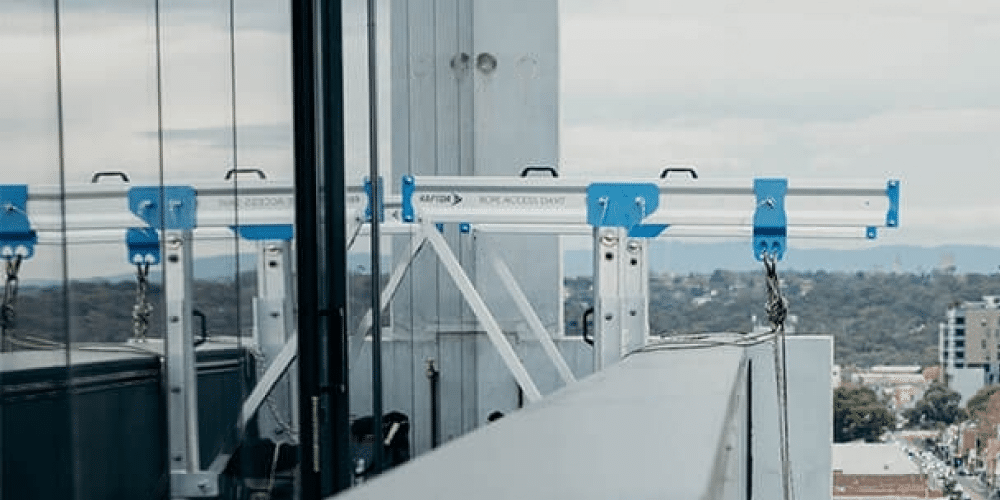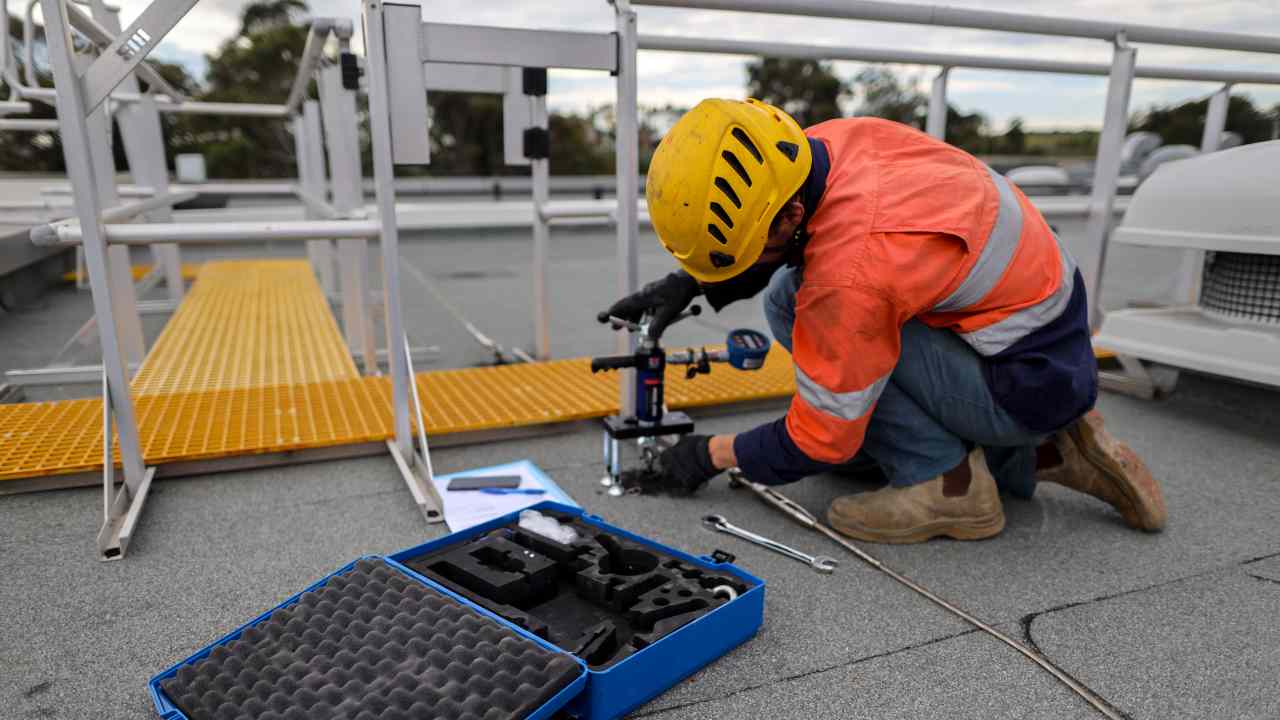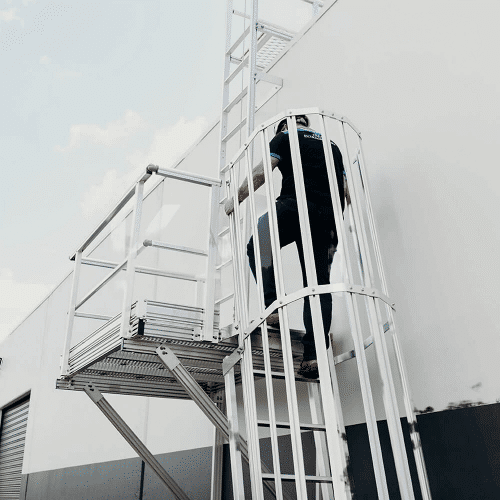Height Safety System Services
Safe, Height Safety Capabilities
We believe safety should be accessible to all, no matter what
The world of construction and industrial tasks often demands work in elevated spaces. This is where the expertise of height safety engineers comes into play. These professionals leverage height safety engineering services to guarantee secure working environments

Height Safety System Services
We believe safety should be accessible to all, no matter what

In the vast panorama of modern edifices, safeguarding the vertiginous heights of contemporary structures is imperative. Height safety engineers champion this critical mission and orchestrate comprehensive safety methodologies with their expertise. They carefully incorporate these rules into buildings to reduce the dangers of working at high altitudes.
Before the construction blueprint materializes into a tangible form, these engineers synergize with architectural visionaries—their collective endeavour is infusing every architectural design with an innate DNA of safety. Thus, from its inception, every structure stands as a testament to the paramountcy of occupant safety.
After installing these avant-garde safety infrastructures, the engineers' mandate persists. They curate an exhaustive repository of detailed schematics and user-centric manuals. This helps everyone on-site understand the system's abilities and limits, comprehensively empowering them.
In the intricate realms of construction and edifice creation, the contribution of height safety engineers is paramount. Beyond task execution, their expertise lies in discerning and adeptly navigating potential pitfalls. SAS Projects - Height Safety Engineers spearheads this initiative, sculpting comprehensive training paradigms that endow teams with quintessential safety acumen.
Furthermore, regarding equipment mastery, SAS Projects - Height Safety Engineers prowess remains unparalleled. They facilitate requisite licenses and certifications to ensure that every operative is adeptly equipped. Additionally, we cannot overstate the essentiality of top-tier Personal Protective Equipment (PPE). SAS Projects - Height Safety Engineers curated repository assures operatives equipment that melds safety with ergonomic sophistication.
In the nuanced arena of high-altitude endeavours, the role of height safety engineers is unequivocally critical. These safety leaders have a clear responsibility, primarily when their teams work in high places and use advanced fall protection systems. Their responsibilities coalesce around three pivotal cornerstones:
- Comprehensive Documentation; It is incumbent upon these engineers to ensure a thorough archival of system manuals and reference . This empowers every stakeholder with a profound grasp of operational intricacies, setting clear demarcations of system boundaries and potential risks.
- The engineers are responsible for developing and disseminating a comprehensive set of safety rules for working at heights; They aim to ensure a safe working environment for everyone involved. These rules are designed to minimize the risk of accidents and injuries. The engineers work diligently to create clear, practical, and easy-to-understand directions. They also strive to raise awareness about the importance of following these rules to prevent accidents. Each altitude-centric operation should adhere to these protocols, synergizing seamlessly with the implemented safety provisions.
- Ongoing Proficiency Augmentation; The dynamic landscape of height safety incessantly evolves. Thus, engineers must facilitate regular skill enhancement for their teams, ensuring alignment with the zenith of industry standards.

The labyrinth of elevated tasks is replete with unique challenges. To navigate this intricate maze, professionals require the sagacious guidance of height safety engineers. Every ascent, bolstered by specialized systems or fall protection gear, mandates an assurance rooted in skill and apt equipment.
A profound understanding cultivated by these engineers becomes pivotal. It equips operatives with the essential competencies, enabling them to execute tasks within treacherous terrains with finesse. Moreover, the nexus of skill and the right toolkit underscores every successful operation.
Optimal personal protective equipment (PPE) remains indispensable. When personnel are equipped with the pinnacle of ergonomic gear, their efficacy is augmented, cementing unwavering adherence to safety protocols.
The multifaceted domain of fall protection demands perspicacious expertise. Every edifice is a unique entity, warranting bespoke height safety stratagems that resonate with its distinct character. The acumen of height safety engineers is instrumental in deciphering this optimal alignment, ensuring unerring protection.
Structural facets, such as rooftop apparatuses, necessitate secure accessibility paradigms. Entrusting this intricate mandate to adept teams like SAS Projects - Height Safety Engineers ensures the infusion of decades of height safety erudition. Yet, the inception of a system is merely the commencement of a continuous commitment. Adherence to Australian standards and periodic maintenance guarantees the system's enduring efficacy.
This code provides practical guidance for businesses on how to identify, assess, and control workplace hazards to minimize risks to workers' health and safety.
This industry code, published in September 2021, provides guidance on the design, installation, and maintenance of fixed platforms, walkways, guardrails, stairways, and ladders for working at height.
Larger units can have significant footprints
Generally, two-person use capacity
This code offers guidance on the design, installation, and maintenance of permanent anchor systems, lifeline, and rail installations for working at height.
This code provides practical guidance on managing risks associated with falls at workplaces, including risk assessment and control measures.
Selecting the right facade maintenance system requires careful consideration. Each building is unique, and height safety solutions are not one-size-fits-all. At SAS Projects, we can assist you with new system designs or conduct auditing and/or system installation on your existing buildings. For advice on your requirements, contact us on the form below:
Everything you need to know about our service. Can’t find the answer you’re looking for? Please, chat to our friendly team.
Height safety engineers specialize in the design, implementation, and evaluation of safety protocols and systems for individuals working at heights. Their expertise encompasses a broad scope of safety engineering, ensuring that workplace health and safety standards are always upheld.
Height safety engineers meticulously analyze and align all protocols and equipment recommendations with the prevailing Australian standards. They also remain abreast of any updates or changes to these standards, ensuring all safety systems, from roof access to fall protection systems, consistently adhere to national regulations.
Absolutely! Height safety engineers often work in tandem with facility managers to devise and implement height safety systems tailored to specific buildings or structures. Their collaborative efforts ensure both safe access and compliance with safety standards, minimizing high-risk situations.
Height safety engineers provide a comprehensive array of training programs covering diverse aspects of working at heights. These can range from basic safety protocols to advanced techniques, including emergency response and rope access areas, ensuring that teams are equipped with the necessary skills for their specific roles.
Height safety engineers utilize cutting-edge technology and methodologies to design height safety and fall protection systems. These systems not only meet but often exceed, workplace health and safety standards. Their primary aim is to mitigate risks associated with elevated work, ensuring workers' safety and minimizing potential hazards.
Indeed, height safety engineers are trained and experienced in managing high-risk projects. Their in-depth knowledge in safety engineering, combined with their familiarity with the latest in safe work practices and equipment, positions them as indispensable assets for any project demanding work at elevated levels.